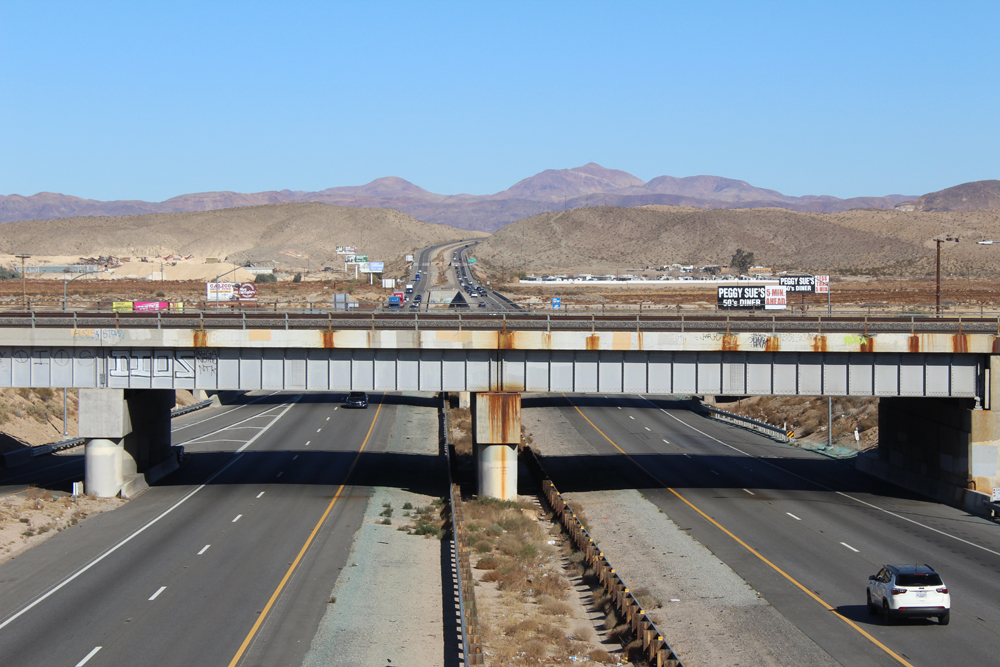
LAS VEGAS, Nev. — Agencies in California and Nevada have issued private activity bonds for the Brightline West project, a key element in funding the 218-mile high-speed rail venture between Las Vegas and Southern California.
It is not clear whether the start of construction is contingent on obtaining money from the combined $2.5 billion in bonds offered by the California Infrastructure and Development Bank and Nevada’s Department of Business and Industry. The bonds, now being evaluated by institutional investors, are just one component in financing the $12.4 billion project, along with federal and state grants and loans.
Bond documents did acknowledge that the system would not meet its previously expressed goal of completion in time for the 2028 Summer Olympics [see “Brightline West now expecting to launch …..,” News Wire Jan. 26, 2025].
Nevertheless, shovels-in-the-ground work is poised to begin. The destination for the project’s first phase is a Metrolink Station-parking garage complex to be built at Rancho Cucamonga, Calif., about 42 miles from Los Angeles Union Station on the commuter operator’s ex-Santa Fe San Bernardino line.
Tracks between Las Vegas and Rancho Cucamonga will generally be positioned in the median of Interstate 15. The highway features steep ascending and descending grades of up to 6% at several locations, including a path following I-15’s northbound lanes up and over Cajon Pass. Because the plan promises to push the limits of worldwide 220-mph rail construction standards and operation to new extremes, Trains News Wire recently followed the route for a look at some of its noteworthy features.
Las Vegas station
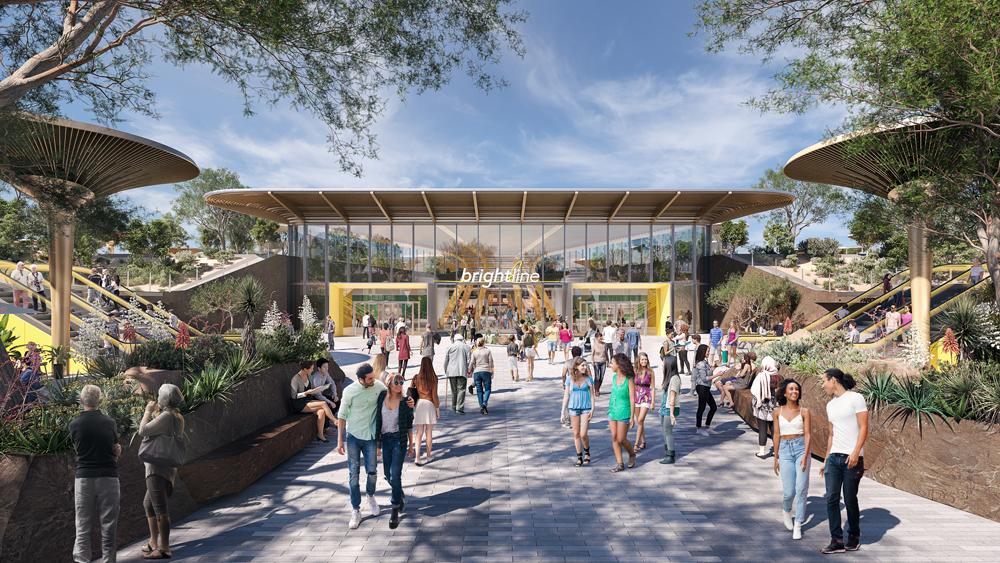
Last spring, the company held a ceremonial groundbreaking off of South Las Vegas Boulevard at Robindale Road, south of the Warm Springs interchange [see “Brightline West groundbreaking hailed …,” News Wire, April 22, 2024]. As seen below on Jan. 17, 2025, a billboard facing I-15 had been placed in front of vacant land. The building and platforms will angle to the right of the sign; the control tower of Harry Reid International Airport is visible in the distance. A facility housing the airport’s rental car operations (now far from the terminals) is set to be built near distant buildings visible to the left of the sign. Rental cars will thus be within a shorter shuttle distance to the Brightline station than the airport.
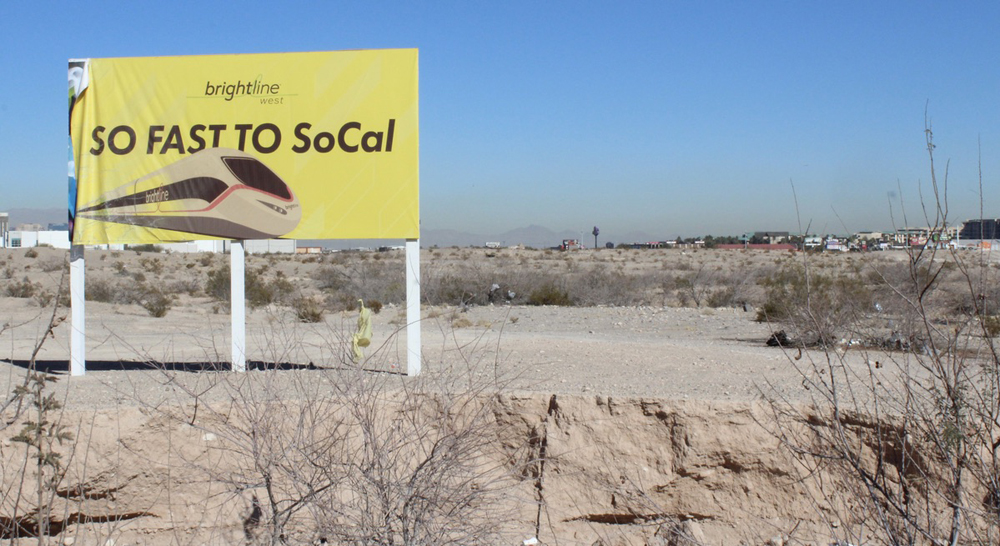
Cactus Avenue along I-15
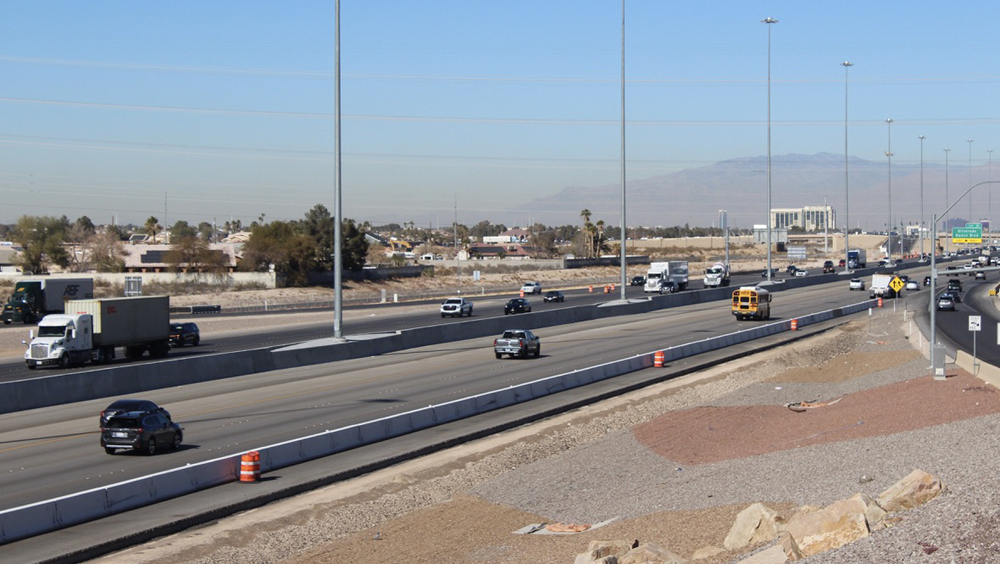
Vehicle Maintenance Facility, Sloan, Nev.
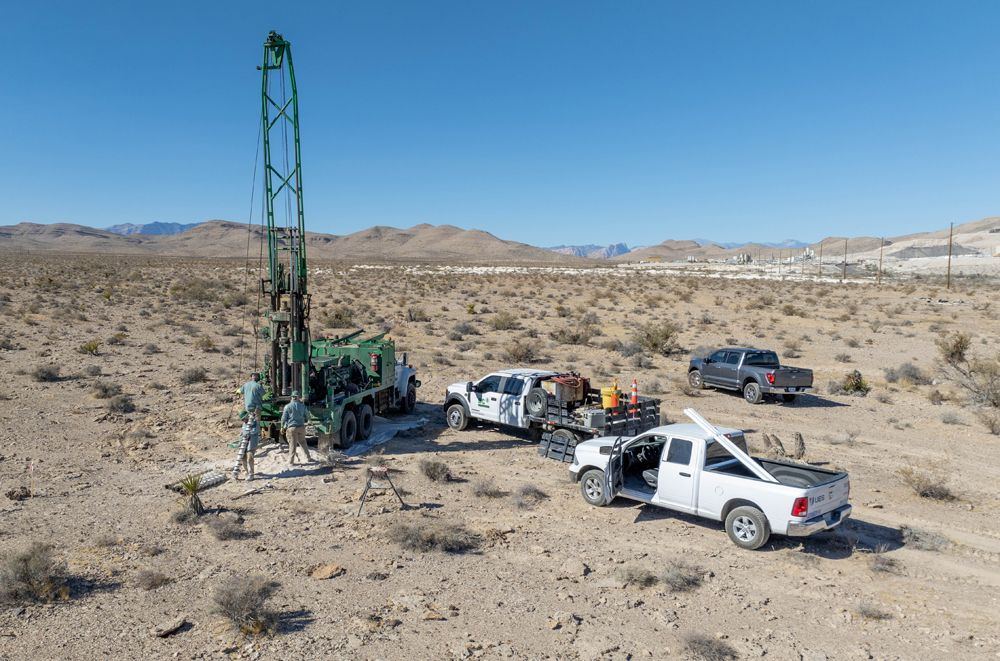
Geothermal soil samples were taken in November 2024, on land near I-15 at Sloan, Nev., about 10 miles south of the station, where Brightline West’s Vehicle Maintenance Facility will be located. Testing has now been completed, clearing the way for site preparation and construction. Reconfiguration of the highway’s southbound lanes will permit a track to branch off from the main line in the median toward the facility. This location is also near Union Pacific’s Salt Lake City-Los Angeles rail line, from which materials and Siemens trainsets could be delivered. The light-colored horizontal embankment visible in the background supports UP’s tracks.
Yates Well Road
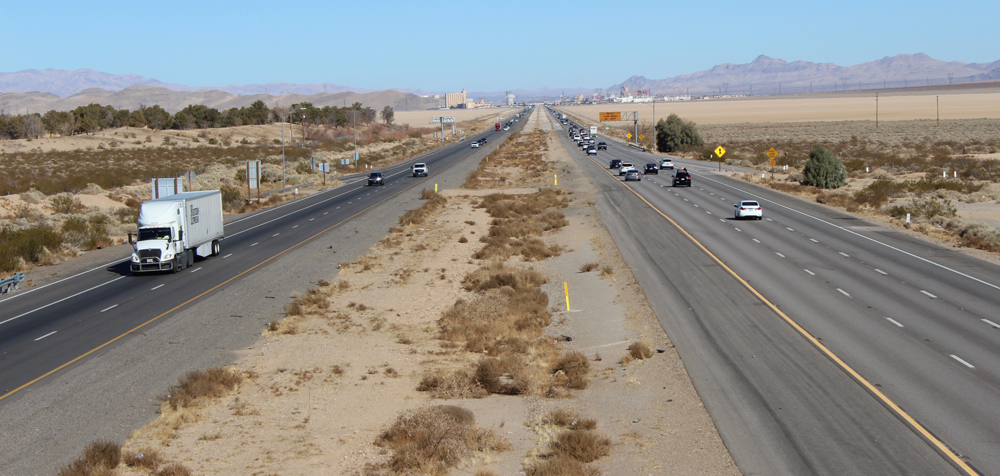
Single track will be initially deployed on about 90% of the route, with double track strategically positioned to accommodate hourly departures in both directions. While top speeds approaching 200 mph are possible here, 15 miles of curving roadway and heavy grades into California will necessarily limit speeds. Further west, there are other stretches where the road is straight but rises and falls on 4% grades.
Barstow BNSF and Main Street
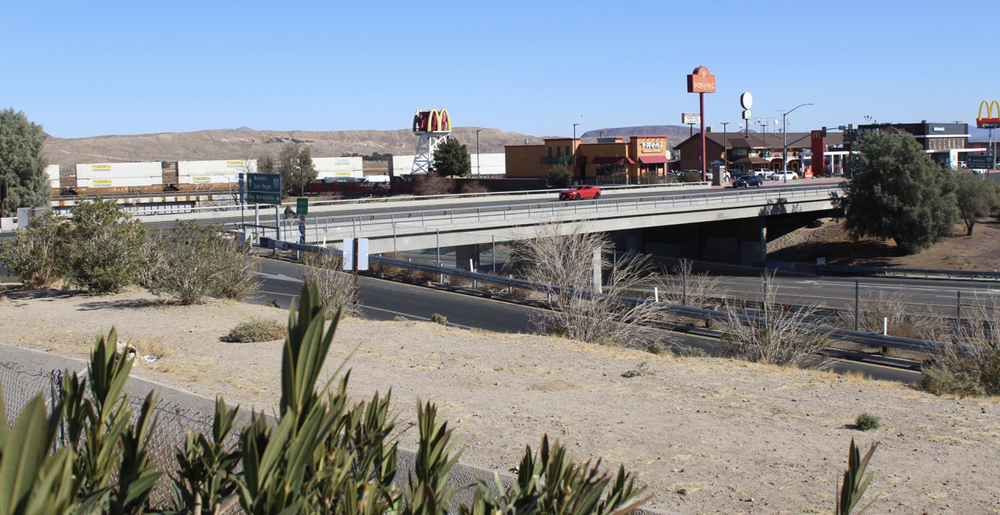
Cajon Pass at California Route 138 and Silverwood Lake
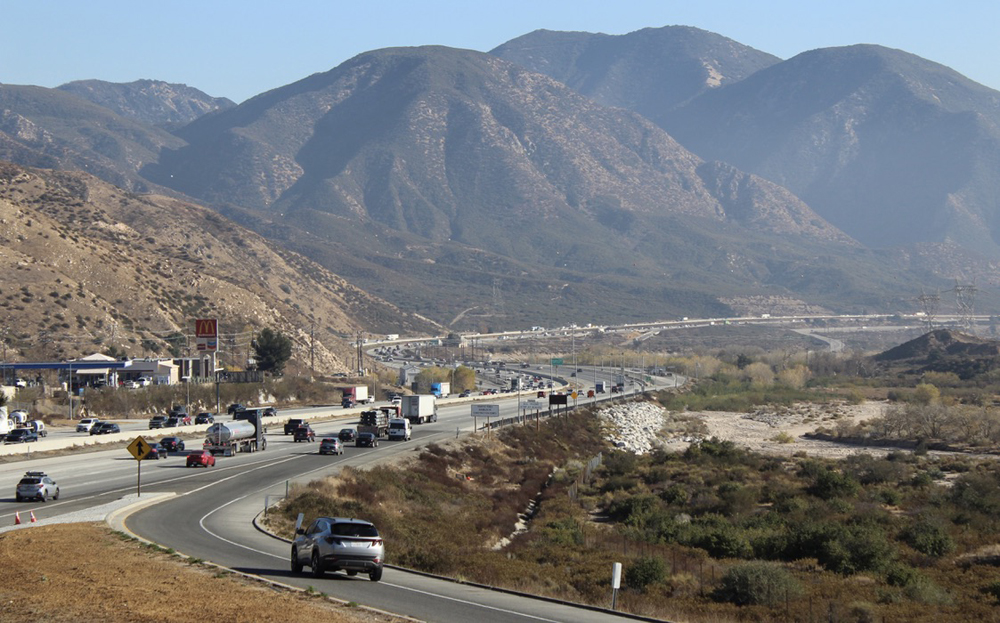
Coming down the south side of Cajon Pass in the narrow median, Brightline West trains would twist through a series of reverse curves on a 6% grade before hitting their stride on a straightaway toward San Bernardino. Northbound trainsets would have a much tougher slog here compared to the ruling 2.2% grade encountered on nearby tracks over Cajon traversed by Amtrak’s Southwest Chief and a host of BNSF and Union Pacific freights.
Transition off I-15
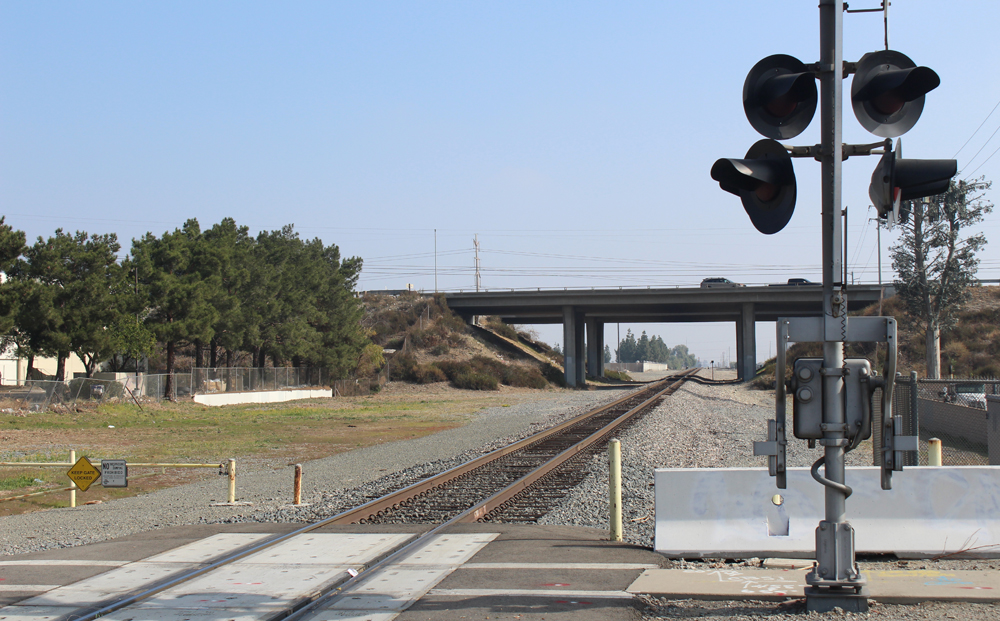
Rancho Cucamonga station
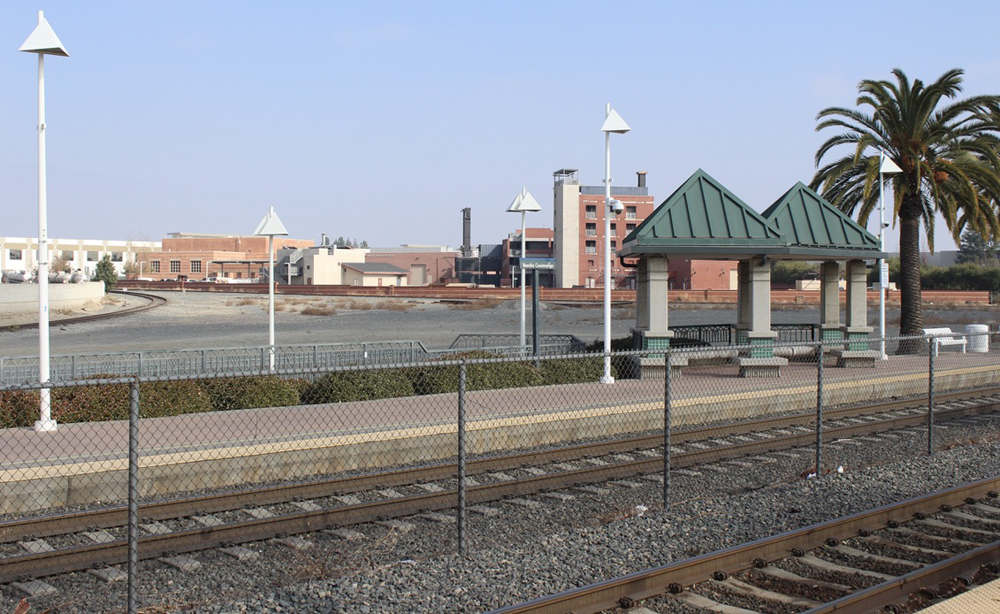
Recent policy changes by the new Trump administration may have introduced an element of uncertainty, but Brightline utilized the same financing strategy during the Trump’s first term to launch its Florida operation. This project’s scope — and potential investment and mobility return — is far greater.






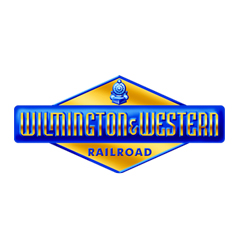
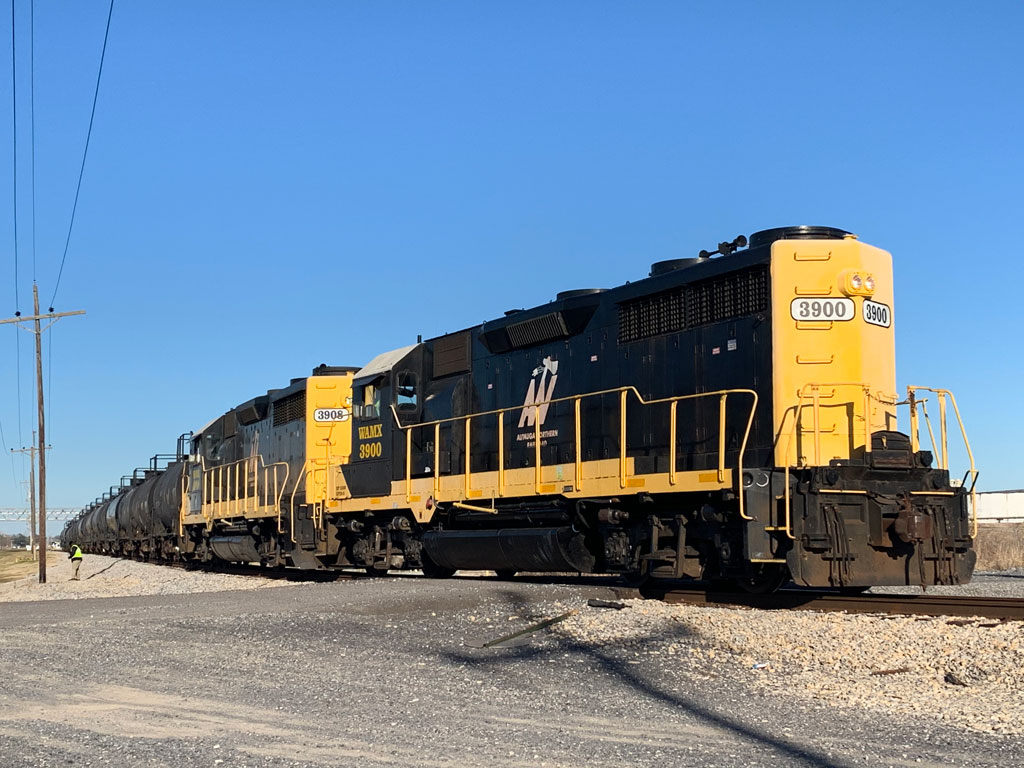
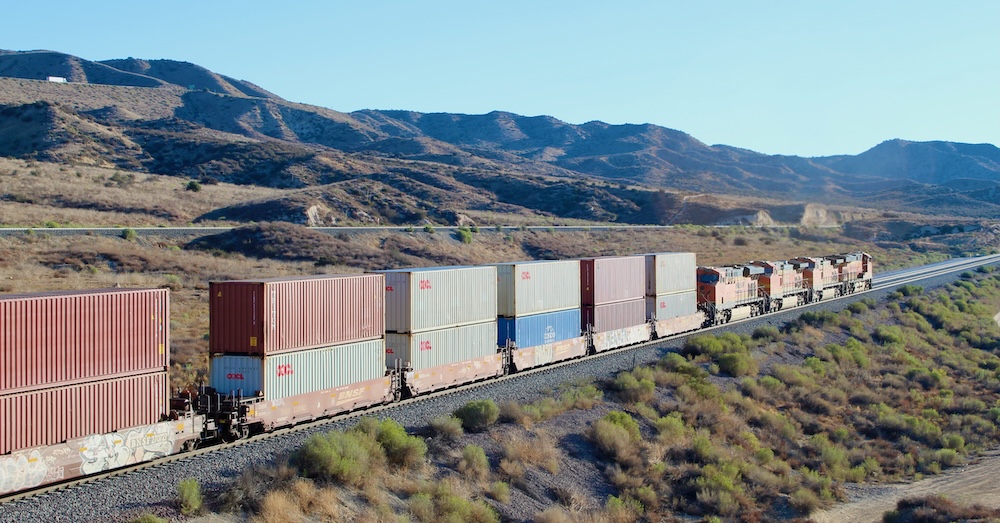
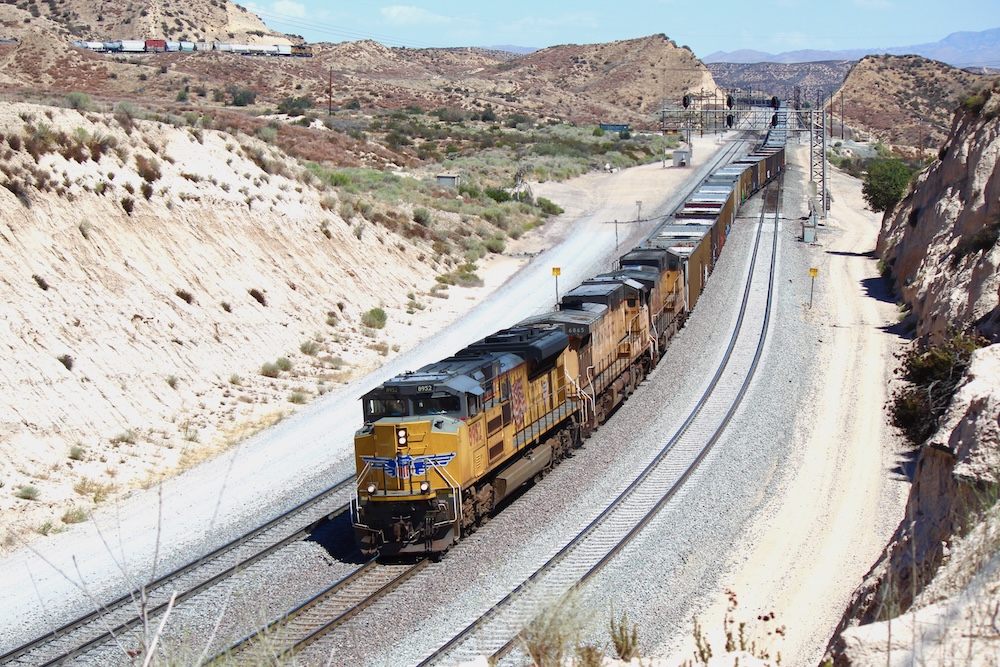
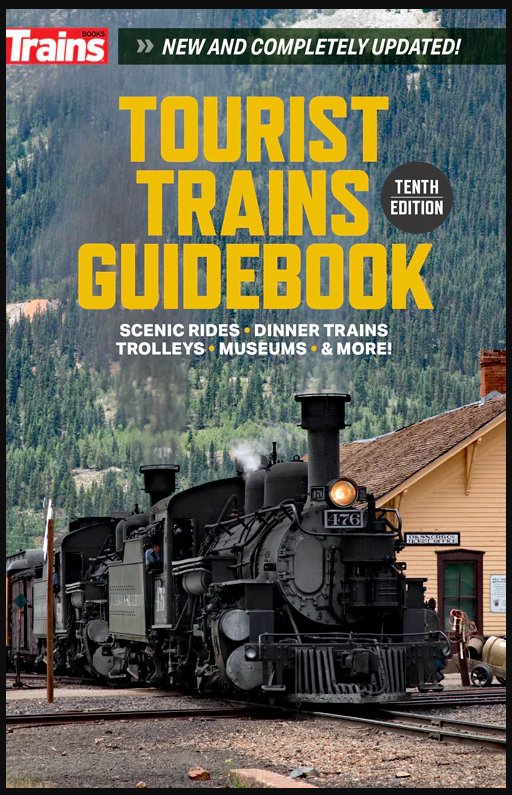
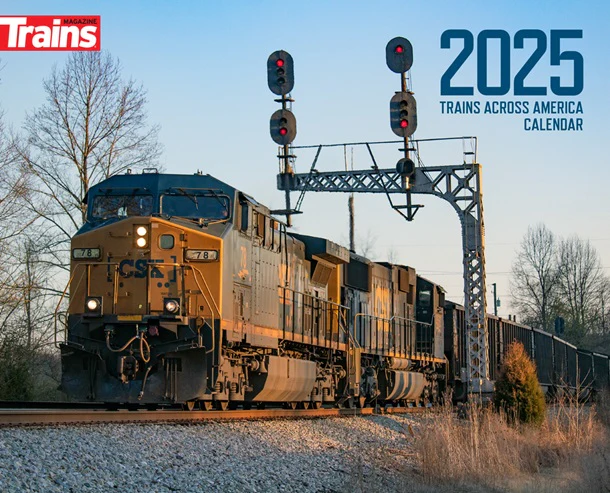
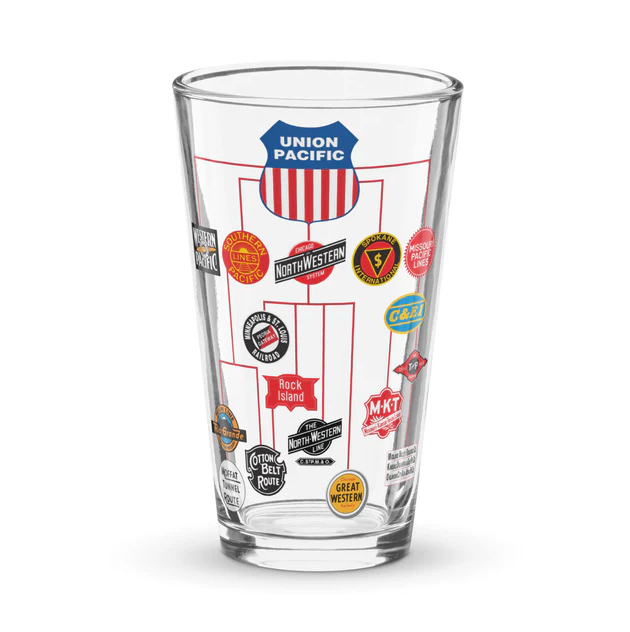
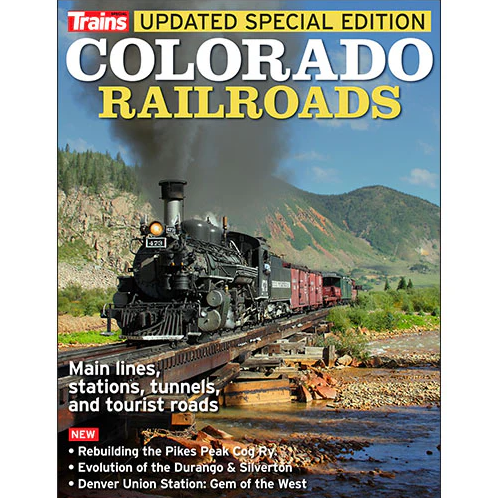
Curious from a marketing aspect (Whales to Penny Slot players) if the casinos have or plan to have “skin” in this project. Comps, private coaches, “off-day” BW pricing, “casino on the train coaches”, liquor comps, etc.
The Federal Deposit Insurance Company does not receive any public monies, although its debt is backed by the full faith and credit of the U.S. Government. It is funded by insurance premiums paid by banks and from interest earned on the FDIC’s Deposit Insurance Fund, which is invested in U.S. government obligations.
Actually it is not funded by directly by the covered banks. The depositors fund it by unwittingly accepting lower interest rates.
Kudos to Bob Johnston for another typically thorough and insightful piece. As someone very familiar with I-15 and the multiple air options on this route, Brightline West is a sure thing.
So out a wall up to separate the road from the tracks. No big deal. Walks are being put up all over the place along freeways.
The Liar in Chief will most likely withdraw any Federal funds for this project out of spite to CA & the Green aspect of it which might decrease some gas consumption.
As a long-time California resident who has traversed this stretch of I-15 more times than I can count, I greatly appreciate that the discussion of this project has finally moved into the realm of practical finance and engineering.
It’s hard for people from not-around-here to imagine 200 miles of bumper-to-bumper traffic (with lots of trucks) but that’s the reality of this route part of the week. If the project is completed, the thirst for a less aggravating option than driving or flying will be intense.
I’m also eager to see just how well these trains cope with 6% grades, tight curvature (when I went over Cajon northbound on I-15 a couple of weeks ago I was consciously thinking about that for the first time), and wet rails. It’s a desert, but I’ve been stuck in snowstorms on every one of these passes at one time or another and y’all, it’s going to be a challenge…
This grade issue is a chimera. I’ve ridden TGVs on 4% grades that barely broke their stride. Maybe down to 150 mph. 6% certainly isn’t going to stop them.
I think it’s the diesel-electric mindset that has people worried; the expectation that a train is limited by the power that can be generated onboard. Overhead catenary can deliver huge amounts of power to pull up steep grades.
Oh, so that’s what’s considered “a wide median”? If the photo is representative of much of the route, it looks like a normal 50-foot or so freeway median. Are we talking about one track or two? Two tracks would be a very tight squeeze. One track or two, you have to change the drainage the entire length of the median. What happens if there is the pier of an overpass in the median? Then there’s the construction issue. Really do you want tens of thousands of arrivals and departures of dump trucks, excavators, transit mix trucks, rigs for building the rail infrastructure, etc. etc. in the median shoulder? This on a freeway that Brightline West proponents insist is so overburdened with cars and trucks that a passenger railroad is needed.
Then you have the issue of traffic clear zone. I don’t know the clear zone for an Interstate Highway at whatever the speed limit, but call it for discussion purposes 30 feet, or about 18 more feet inside of the two inside of the existing inside shoulders. So unless you have a continuous concrete barrier, the 50-foot median is reduced to about 14 feet, in approximate terms, unless a continuous concrete barrier is installed on each side the entire length. On a freeway, a concrete barrier is not considered a safety feature, but an unfortunate necessity. An obstacle-free runoff clear zone of, say 30-feet, is considered safer, to say nothing of a whole lot cheaper.
As this is HSR, you need continuous fencing, not a pleasant feature if a train needs to be evacuated or if emergency responders need to access the track from the freeway.
I’m sorry if I’m the only one, folks. Brightline West has earned 100% support on these forum pages. Not from me.
When it comes to travel patterns, Brightline West is not the same as Florida’s Brightline, where there are passenger stations all along the route. As you can’t build a passenger station in a 50-foot freeway median, this is pretty much a long-distance end-to-end service. That’s what airplanes are for. I assume that there are many flights to Las Vegas from LAX, Ontario, San Diego, and Burbank (and I think there’s an airport at Long Beach also). I am at a total loss as to how Brightline West would in any way be an improvement over the air service that now exists. I’m for passenger trains where tracks exist. Tracks for Brightline West do not exist.
Come to Chicago Charles and see train stations in median strips narrower than I-15.
Also come to Chicago again to see hundreds of trains daily carrying hundreds of passengers each for dozens of years with no issues on emergency evacuations. Not a problem.
John —- I’ve been in Chicago. The continuous concrete barriers on the medians of the Dan Ryan or John F. Kennedy or Eisenhower make my point (as above).
Rural freeways and urban freeways are different designs and cost differently and drain differently. Also may have different speed limits. What’s proposed on I-15 for Brightline may be to convert many miles of rural freeway into urban freeway (under traffic) in addition to the cost of the railroad itself.
Imagine converting, say, ten miles of old rural freeway into urban freeway (which has been done all over America, when costs were lower). Then multiply the cost for the length of Brightline West.
Your point on evacautions (or lack of evacuations) is noted.
“I’m for passenger trains where tracks exist. Tracks for Brightline West do not exist.”
eXpress West attempted to start service between LV and LAX using former Metra gallery cars that were upgraded. The service was to use the UP tracks.
Everything was ready to go except for one thing, UP wanted eXpress West to carry a massive liability insurance policy. UP is used to dealing with Amtrak for liability due to the governments deep pockets.
After months of navigating the insurance markets they could not find anyone who would provide a policy so large. After a year they did get a policy quote and it was so off the roof expensive there was no way to integrate it into the fare structure.
One only look at what happened when Amtrak hit a truck at a crossing in Missouri on the BNSF ROW. 12 lawsuits followed within 4 weeks.
So when you look at it, it is probably cheaper for BW to lay their own tracks to control the liability instead of attempting to rent someone elses.
@ Charles Laney, “That’s what airplanes are for.”
I see a potential market share that could/should be taken away from the airlines using high-speed, pollution free, electric passenger rail competing efficiently and profitably in the private sector against the airlines wherever possible. That’s where the money should be. Adding light weight, overnight freight, such as Fedex, UPS, USPS, and the former REA, etc. should be considered as well.
After reading this article, how can anyone still believe that Brightline West is a free-market company.
It’s just another example of corporate welfare.
Readers know that every almost passenger railroad on the face of the earth is tax-subsidized, most of them very heavily so. Brightline West will cost substantially more per mile than most of them so the tax subsidy will be all the higher.
Brightline West couldn’t build or operate one inch of railroad without it being wards of the two state governments. The chances of Brightline West recovering its capital and operating cost are exactly the same as the chances of me walking to Jupiter without a space suit and getting there by dinnertime.
There is no economic difference between CalHSR and Brightline West. The only difference is that one is a tax-subsidized public agency and the other is a tax-subsidized private corporation. The economics of either are beyond hopeless.
Interesting when you state that as if you know the facts about the financing aspect as well as how Brightline intends to make most of it’s money. Just as in Florida it is all about the real estate, even though Brightline itself is making money down in Florida the real income will come from the future real estate developments around the stations.
As for the grade problem, I wonder how many people know that if they are going to use the Siemens IC3/4 as the basis for Brightline West those trains were designed to ascend grades of 3 to 4% at 220mph specifically, so I think the curvature more than the gradients will deter speed, and some of those descriptions of the routing don’t match what I’ve read elsewhere.
“tax-subsidized public agency”
Aren’t all public agencies paid for by taxes of some kind?
Name a public agency that isn’t “tax-subsidized”.
John — Airports and toll roads and publicly-owned electric utilities are public agencies that should (and sometimes do) cover their costs from revenue, not taxes.